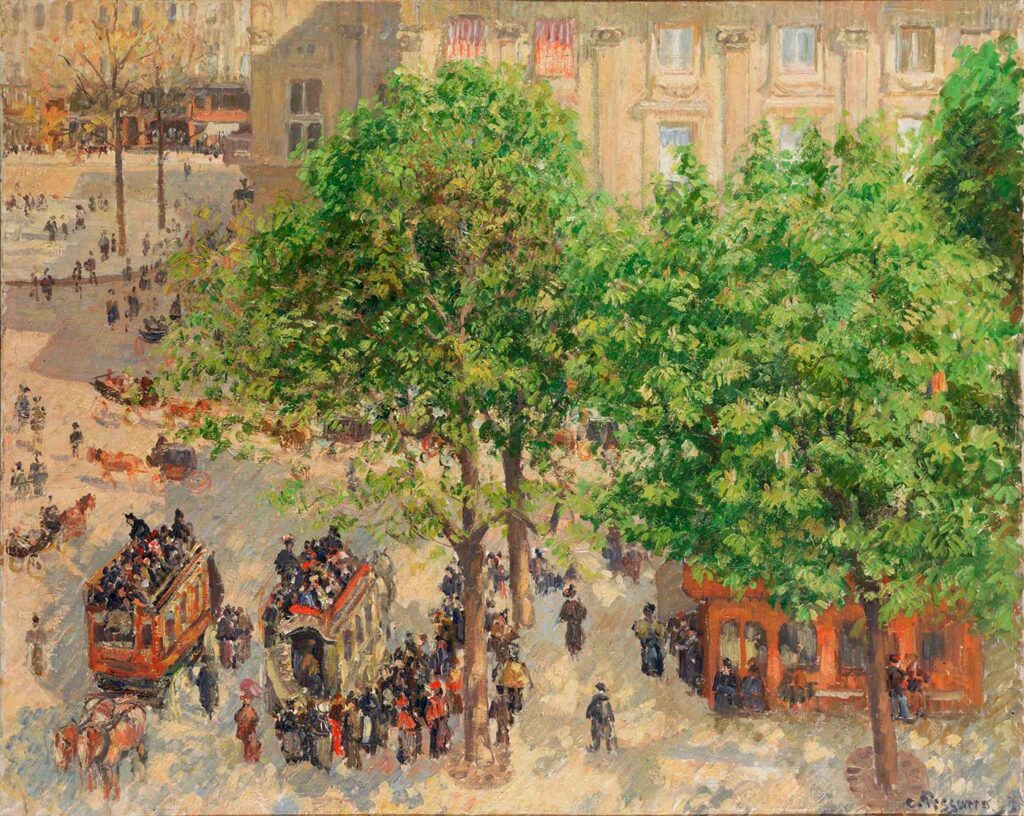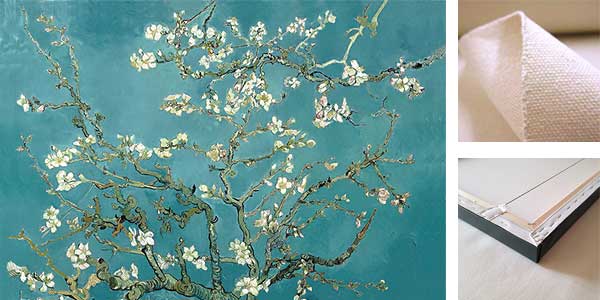
Place du Theatre Francais Spring by Camille Pissarro was created in 1898. The painting is in Hermitage Museum St Petersburg. The size of the work is 65,5 x 81,5 cm and is made of oil on canvas.
Here Pissarro depicted that part of Paris near the Comedie Francaise, although the theatre building itself remains outside the painting. The artist was interested not in famous views, but in the everyday life of the city itself, such as the stop for horse-drawn trams in the foreground. With free, clearly differentiated strokes, the artist captures the traffic and tiny human figures, the fresh spring leaves of the trees. He manages to convey the atmosphere and the sunlight, giving the city a vivid charm. Like Claude Monet, Pissarro painted series of pictures of one and the same urban scene in a variety of very different weathers and conditions; in his case he took Paris as his main theme. The Hermitage canvas is from one such cycle of works, painted in a rented room in the Hotel du Louvre looking out over the scene… Read more in Hermitage Museum
About the Artist
Jacob Abraham Camille Pissarro (10 July 1830 – 13 November 1903) was a Danish-French Impressionist and Neo-Impressionist painter born on the island of St Thomas (now in the US Virgin Islands, but then in the Danish West Indies). His importance resides in his contributions to both Impressionism and Post-Impressionism. Pissarro studied from great forerunners, including Gustave Courbet and Jean-Baptiste-Camille Corot. He later studied and worked alongside Georges Seurat and Paul Signac when he took on the Neo-Impressionist style at the age of 54.
In 1873 he helped establish a collective society of fifteen aspiring artists, becoming the “pivotal” figure in holding the group together and encouraging the other members. Art historian John Rewald called Pissarro the “dean of the Impressionist painters”, not only because he was the oldest of the group, but also “by virtue of his wisdom and his balanced, kind, and warmhearted personality”. Paul Cézanne said “he was a father for me. A man to consult and a little like the good Lord”, and he was also one of Paul Gauguin’s masters. Pierre-Auguste Renoir referred to his work as “revolutionary”, through his artistic portrayals of the “common man”, as Pissarro insisted on painting individuals in natural settings without “artifice or grandeur”. Read more in Wikipedia
Order a reproduction of this work (printed on canvas)
